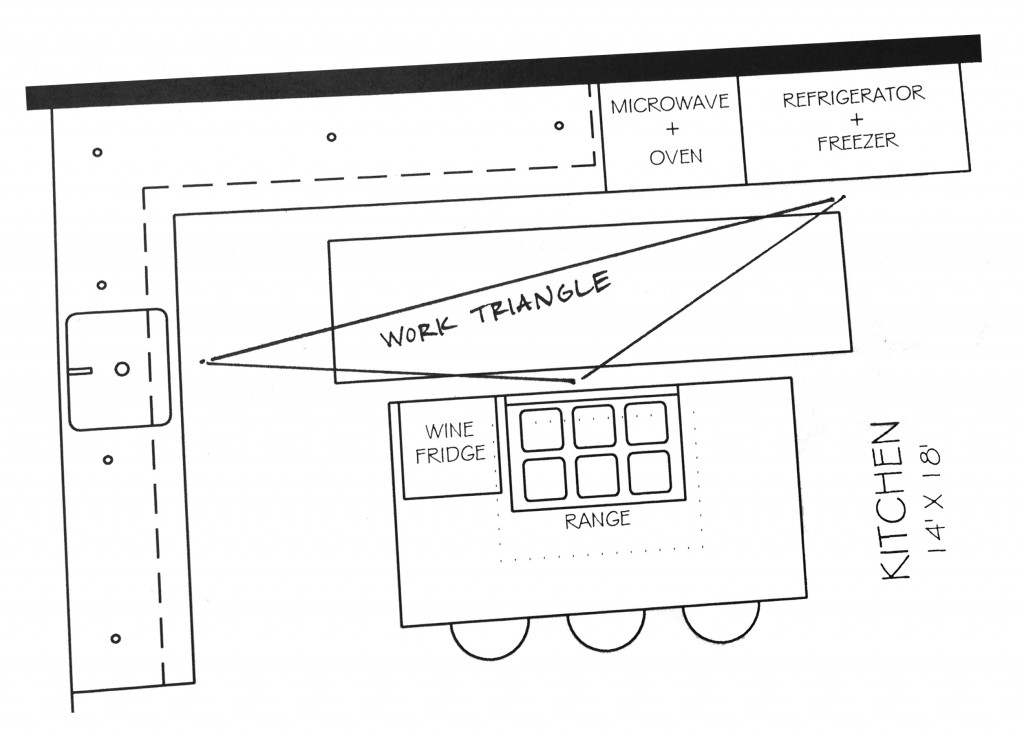 Designer Ray Eames, the wife of Charles Eames, believed, “What works good is better than what looks good, because what works good lasts.” When envisioning a partial or full home renovation, clients will often think in terms of how their new space will look upon completion. And while it’s certainly easy to get swept up in textures and decorative elements, it is also important, or as Ray Eames claims, more important, to get excited about how your newly remodeled home will function.
Designer Ray Eames, the wife of Charles Eames, believed, “What works good is better than what looks good, because what works good lasts.” When envisioning a partial or full home renovation, clients will often think in terms of how their new space will look upon completion. And while it’s certainly easy to get swept up in textures and decorative elements, it is also important, or as Ray Eames claims, more important, to get excited about how your newly remodeled home will function.
Existing home layouts, especially some of the row homes in Washington, D.C., are not ideally suited to the needs of their current residents. As you are considering a remodel, you are in the unique position to curate a space tailored to your specific lifestyle and daily living patterns. You may have a mental list of issues or nuisances you experience from day-to-day in your present home — or you may not. The Four Brothers design team will help you think through many of the typical scenarios in your life and determine some of the areas in your home that may not be maximizing your ease of living.
You want to distinguish two major groups of spaces when enhancing the functionality of your home: areas that flow verses areas that pool. (Think:water.) First, the “flow” of a space (i.e., how you travel through your home.) To help determine traffic flow within your space, let’s borrow a term from another design field — urban planning. Urban planners use the term “desire path” to describe the paths created by the natural tendency of people to take a particular route again and again. You’ve likely seen such etched out, dirt foot paths created by people taking a more direct route between existing sidewalks. So, it may be helpful if you imagine your home as its own small city. Where are your main paths? When you enter your home, where do you most often go first? In the mornings, which areas do you bounce between while preparing for your day? These routes are the major thoroughfares in your home and design adjustments should be made to allow these primary pathways to flow as directly as possible and without obstruction. Which brings us to the second consideration: identifying the areas that “pool”. Pooling spaces are areas where you tend to linger — the living room or a reading area perhaps. Determining these dedicated spaces is equally important because you generally want to avoid placing a major traffic flow, or the creation of a “desire path”, through a space intended for settling.
 One fairly common example of a spacial relationship maximizing function is in the kitchen — the Kitchen Work Triangle. The stove, the sink, and the refrigerator often appear to form a triangle shape in kitchen layouts to provide ease of transition between the three during meal preparation. The sides of the triangle are each a traffic path. However, this area as a whole could also be considered a “pooling” space since one tends to be bouncing around within the work triangle for a certain prolonged duration. As such, you would want to divert any major traffic paths to avoid cutting through and obstructing the work triangle space.
One fairly common example of a spacial relationship maximizing function is in the kitchen — the Kitchen Work Triangle. The stove, the sink, and the refrigerator often appear to form a triangle shape in kitchen layouts to provide ease of transition between the three during meal preparation. The sides of the triangle are each a traffic path. However, this area as a whole could also be considered a “pooling” space since one tends to be bouncing around within the work triangle for a certain prolonged duration. As such, you would want to divert any major traffic paths to avoid cutting through and obstructing the work triangle space.
Every home and owners’ needs are different, but consensus says a well-designed, functional space serves to benefit everyone. Your remodel is going to be more than an addition, new cabinetry, or a freshly tiled bathroom, it’s the opportunity to redesign and improve the entire system of living in your home.